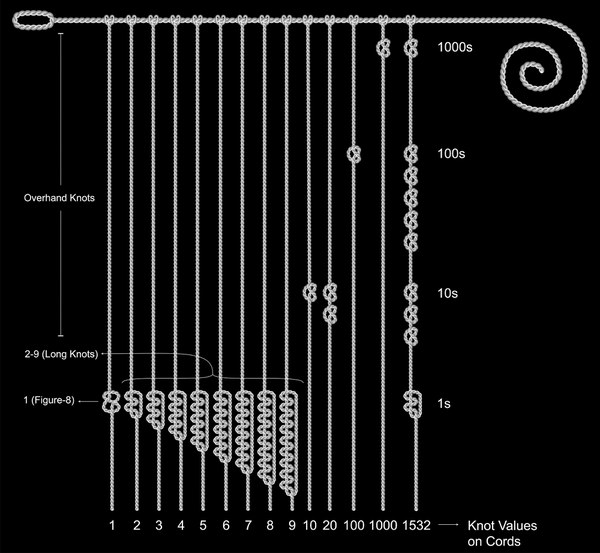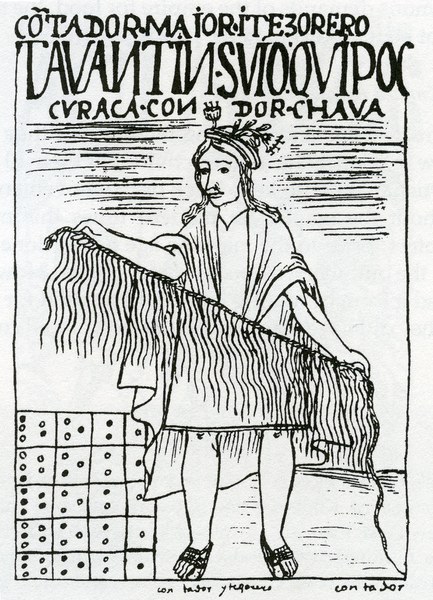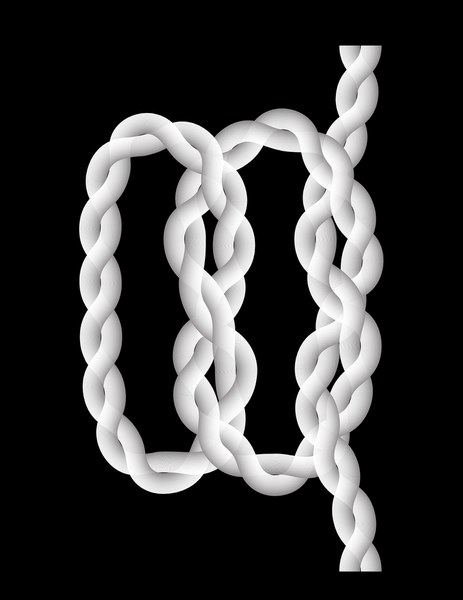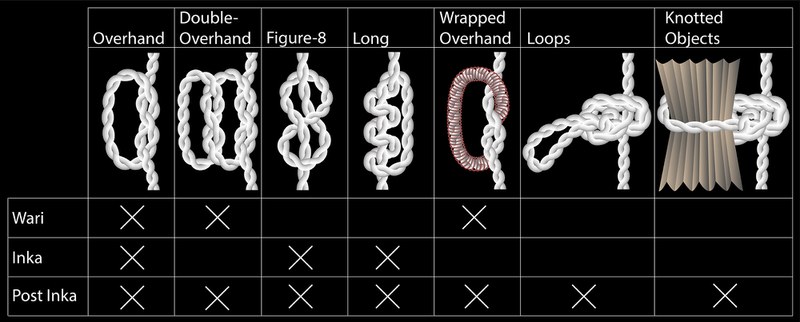“Los nudos de cada número y de cada hilo iban parejos unos con otros: ni más ni menos que los pone un buen contador para hacer una suma grande.” (Garcilazo de la Vega 1991 [1609–1617]: 345)
“The knots for each number on each thread were exactly alike, precise as a good accountant set his figures to make a long addition.” (Garcilazo de la Vega 1966 [1609–1617]: 46)
Knots indicate quantitative information; however, a complete understanding of their function, like everything else about khipus, remains elusive. Pendant-type khipus, both pre-Columbian and post-Inka, record units of one with figure-8 knots and two through nine with long knots. Canuto-type khipus, however, seem to use only long knots. Some post-Inka khipus use loops to represent ten; however, the most common knot found in all khipus regardless of time, type, or style is the overhand knot. Wari and herding-type khipus exclusively use overhand knots, although some Wari overhand knots are double, or triple (up to seven), and some are colored or wrapped.
Knots and Numerical Systems

Pendant-type khipus, both pre-Columbian and post-Inka, employed a base-10 numerical system, where a knot’s position on a cord denotes a power of ten. Numbers are read from the bottom up and left to right, where units one through nine are placed in the lowest register; tens are in the next higher position; hundreds are in the next, etc. Post-Inka khipus often combine cord thickness with knot position to indicate multiples of ten. The numerical system used in Wari khipus is not well understood, but Wari knots were always tied immediately after wrapping or cord attachment, and positional registers, if they existed, functioned differently from Inka and post-Inka khipus.
Knots and Yupana

The Inka developed a system of accounting, where information was copied or summarized from a group of cords to a summary cord, or from one khipu to another, to prevent mistakes or the falsification of records. Complex calculations were performed on a device called yupana (“counter”)—a type of abacus, which could be easily traced on the ground. Using maize kernels or pebbles and a yupana, Inka accountants made rapid computations, adding or subtracting the results to, or from, the next khipu.


